inquiry
Extended Power for the Serious Adventurer
For those who need more energy without stepping up to a massive form factor, the Group 27 LiFePO4 battery is your ideal solution. It offers a significant capacity boost over the Group 24, providing extra peace of mind and power for longer trips off the grid, all while maintaining a manageable size for most standard RV battery boxes.
Benefits of Haicen Smart Group27 Batteries:
More Energy in a Familiar Size:
Delivers a higher Amp-hour (Ah) capacity than a Group 24, meaning more power to run your appliances, lights, and devices for extended periods.
Designed for Boondocking:
The increased capacity is perfect for dry camping, allowing you to power your RV for multiple days without needing to recharge.
Superior Energy Density:
Our LiFePO4 technology packs more usable energy into the Group 27 case than was ever possible with lead-acid, giving you more power from the same space.
Manages Higher Loads:
The robust design confidently handles the simultaneous energy demands of multiple 12V systems in a well-equipped RV.
The LiFePO4 batteries VS Lead-acid batteries:
| Haicen LiFePO4 batteries | VS | Old technology-Lead-acid batteries |
Stable discharge condition | Low temperature condition | Unstable discharge condition |
3,500 times | Cycle life | <500 times |
Around 10 years | Design life | 3 years |
As little as 3.5 hours | Charging time | Up to 8 hours |
No memory, opportunity charge | Charge frequency | Must charge after use |
Multiple built-in protections, high thermal and chemical stability | Safety | Gas inside may cause explosion |
85% or more nominal capacity achieved at high working load | Available capacity | Only 30%~50% nominal capacity achieved under high working load |
| Maintenance-free | Maintenance | Regular water-adding and inspection required |
| Pollution-free | Eco-friendly | Lead is a toxic substance, may cause human lead poisoning |
| Extremely low | Energy loss | 15% |
Key Points for Haicen Battery Quality Control:
Cell match: More strict cell matching standard, the difference of lnternal resistance is 1mΩ and voltage is 5mV.
Automatic cells welding: Cells are assembled by Automatic welding equipments to ensure the quality reliability and consistency.
100% Cycle test: All battery packs are 100% cycle tested (Fully Discharged→Fully Charged→Fully Discharged→60% Charged) before package and all test reports are stored.
Unique tracking number: All battery packs are lasered an unique number on the case side for quality tracking.
Certifications:
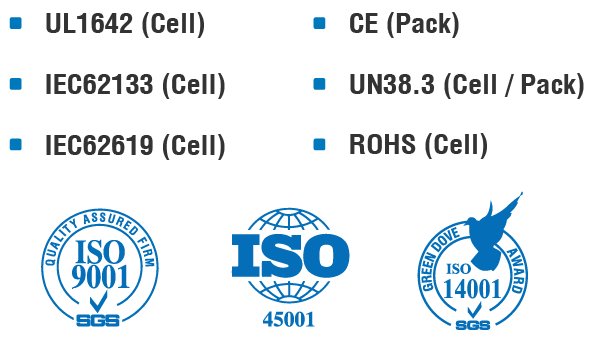
| UL1642(Cell) | IEC62619 (Cell) | UN38.3(Cell/ Pack) |
| IEC62133(Cell) | ROHS(Cell) | CE(Pack) |
Group 27S Battery Dimensions:
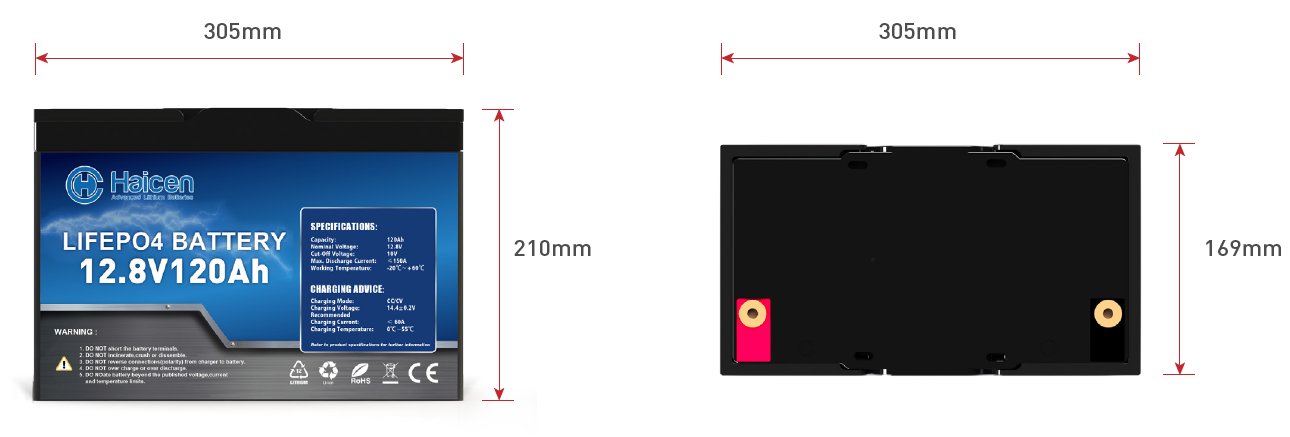
Internal Structure:
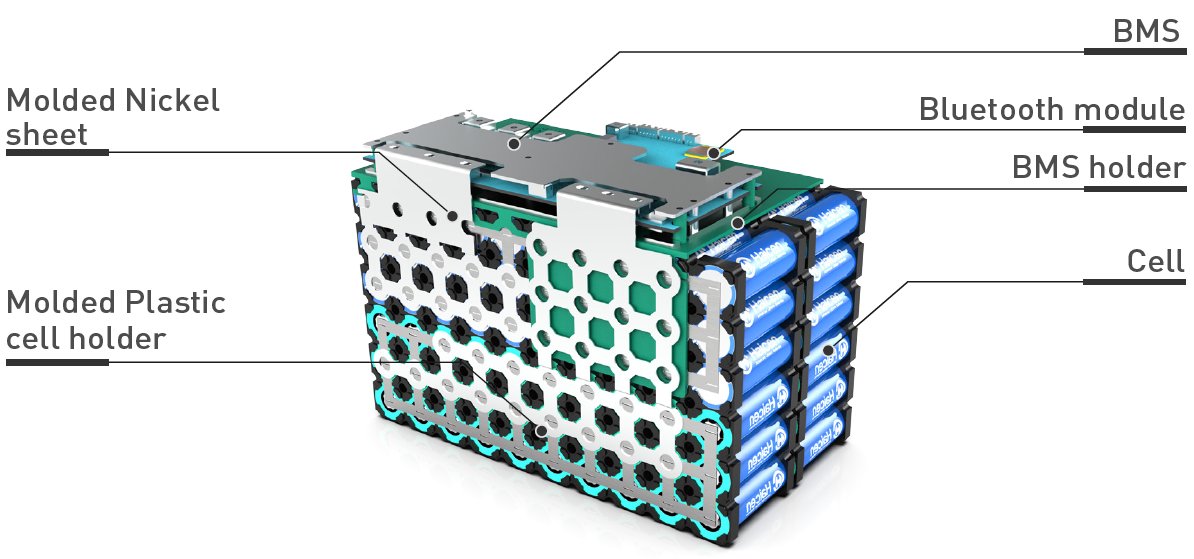
SOC Display (optional):
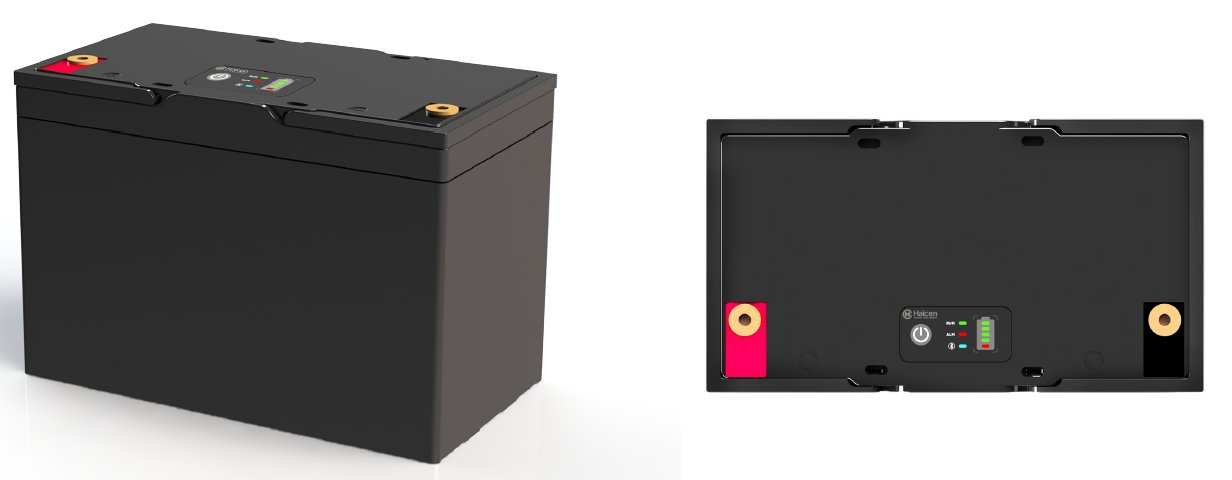
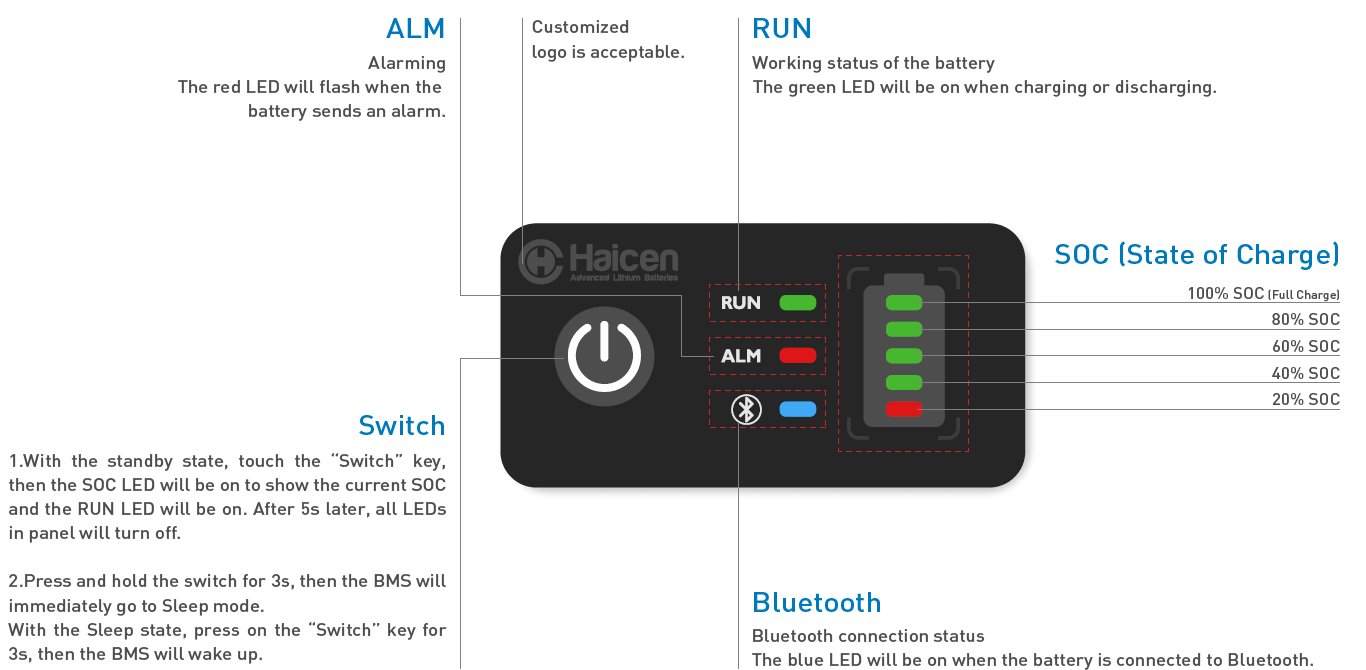
Characteristics Curve:
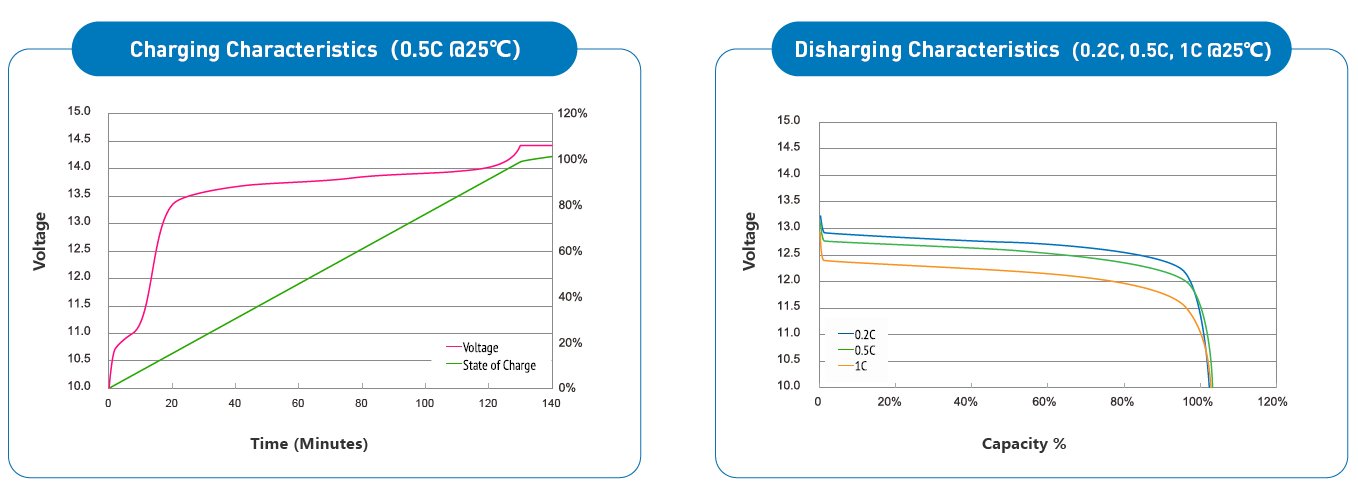
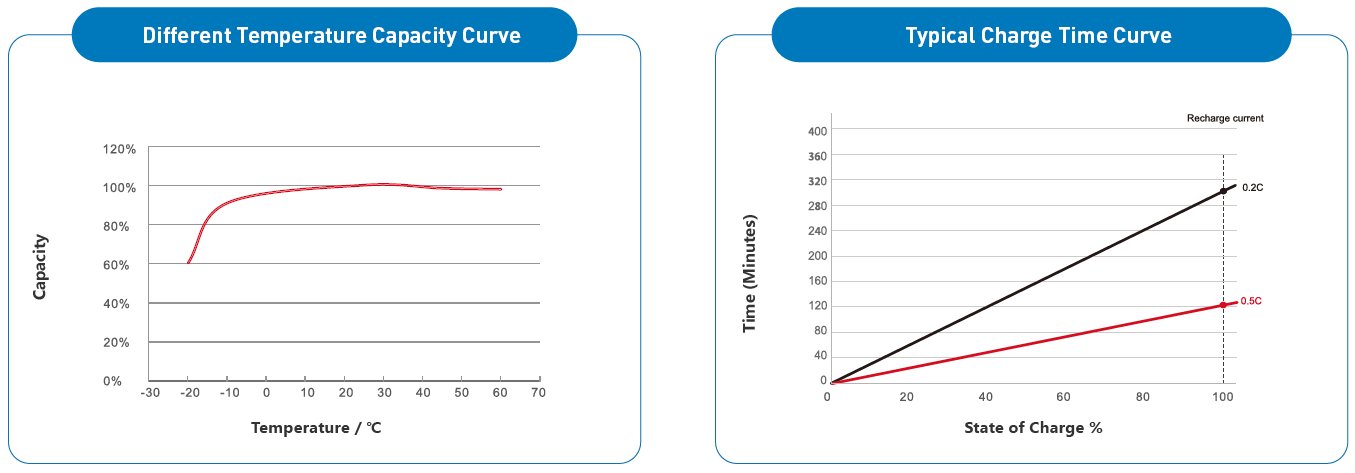
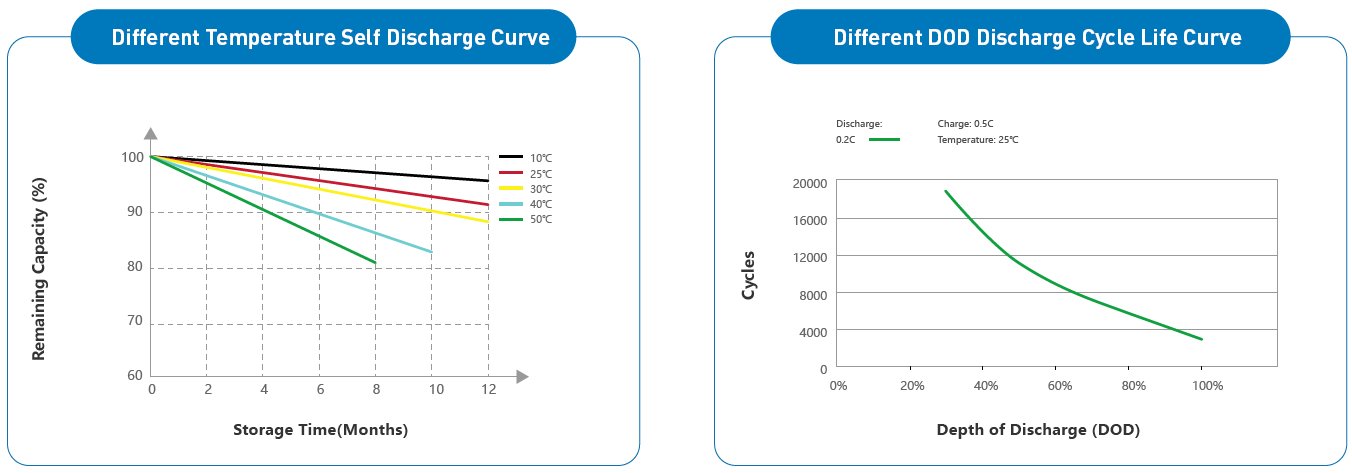
Ideal For: Larger travel trailers, fifth wheels, and Class C motorhomes that require more reserve power for off-grid camping, as well as larger boats with more onboard electronics.
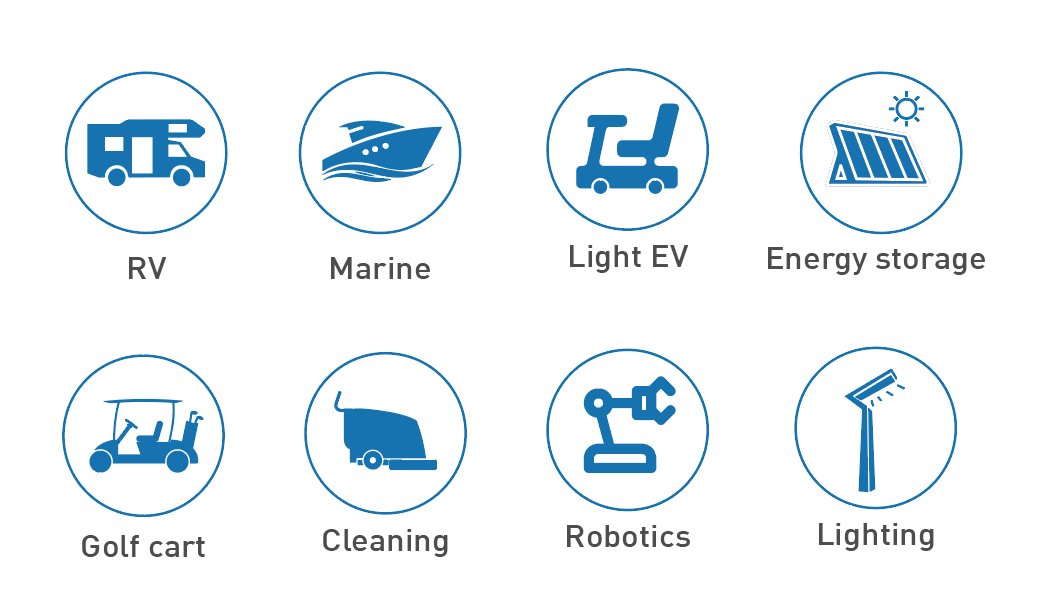
Customized items:
Bluetooth App design: Help you to design and upload customized App, or supply you our Source code for your design.
Case color: Customized case color is acceptable based on quantity more than 300pcs per batch.
Label design: We can help you to design customized label on the battery.
Carton design: Customized carton is acceptable based on quantity more than 200pcs per batch.
Certificates: 50% discount on certificates cost for first bulk order and 100% reback for future orders.
NDA agreement: NDA agreement is allowed and necessary to protect your benefits.
Power Longer Adventures. Compare the specs and see how the Group 27's extra capacity can extend your off-grid stay.
| TECH & SPECS | Model | ||||||
| HCG27S-12120BT | HCG27S-12120BH | HCG27S-12138BT | HCG27S-12138BH | HCG27S-12150BT | HCG27S-12150BH | ||
| Electrical Specifications | Nominal Voltage | 12.8V | 12.8V | 12.8V | 12.8V | 12.8V | 12.8V |
| Nominal Capacity | 120Ah | 120Ah | 138Ah | 138Ah | 150Ah | 150Ah | |
| Parallel Connection | Max. 6units | Max. 6units | Max. 6units | Max. 6units | Max. 6units | Max. 6units | |
| Serial Connection | Max. 4units | Max. 4units | Max. 4units | Max. 4units | Max. 4units | Max. 4units | |
| BMS | 4S150A | 4S150A | 4S150A | 4S150A | 4S150A | 4S150A | |
| Bluetooth | Android/IOS | Android/IOS | Android/IOS | Android/IOS | Android/IOS | Android/IOS | |
| Heat | No | Yes | No | Yes | No | Yes | |
| Circuit Protection | Over charge, Over discharge, Over current, Over temp, Short, Balance, Low temp | ||||||
| Cycle Life | 3000times Cycles @100%DOD and 6000times @80% DOD | ||||||
| Self Discharge | Less than 3% per month | ||||||
| Charge Efficiency | 100%@0.2C | ||||||
| Discharge Efficiency | 98-100%@1C | ||||||
| Charge Specifications | Charge Voltage | 14.4±0.2V | 14.4±0.2V | 14.4±0.2V | 14.4±0.2V | 14.4±0.2V | 14.4±0.2V |
| Standard Current | 24A | 24A | 27A | 27A | 30A | 30A | |
| Fast Current | 60A | 60A | 69A | 69A | 75A | 75A | |
| Discharge Specifications | Standard Current | 24A | 24A | 27A | 27A | 30A | 30A |
| Max. Con. Current | 120A | 120A | 138A | 138A | 150A | 150A | |
| Peak Current | 800A(300ms) | 800A(300ms) | 800A(300ms) | 800A(300ms) | 800A(300ms) | 800A(300ms) | |
| Cut-off Voltage | 10V | 10V | 10V | 10V | 10V | 10V | |
| Mechanical Specifications | Dimensions (mm) | 305x169x210mm(Group 27) | |||||
| Approx Weight(KG] | 13.5 | 14 | 14 | 14.5 | 14 | 14.5 | |
| Terminal Type | M8 | ||||||
| Case Color/material | Black Plastic case(ABS) | ||||||
| IP Rating | IP65 | ||||||
| Cell Type | Cylinder LiFePO4 cell | ||||||
| Cell holder | Yes | ||||||
| Temperature Specifications | Charge Temp | 0℃ to 55℃ (32℉ to 131℉) | -20℃ to 55℃ (-4℉ to 131℉) | 0℃ to 55℃ (32℉ to 131℉) | -20℃ to 55℃ (-4℉ to 131℉) | 0℃ to 55℃ (32℉ to 131℉) | -20℃ to 55℃ (-4℉ to 131℉) |
| Discharge Temp | -20℃ to 60℃ (-4℉ to 140℉) | ||||||
| Storage Temp | -5℃ to 45℃ (23℉ to 113℉) | ||||||
A deep cycle battery is designed to provide sustained power over extended periods and can be discharged up to 80% of its capacity repeatedly without damage. Unlike automotive starter batteries (which deliver short, high-current bursts for engine ignition), deep cycle batteries prioritize deep discharges and recharges. They feature thicker plates and denser active material to withstand cycling stress, making them ideal for renewable energy, marine, RV, and industrial applications.
Recharge immediately after use to avoid prolonged states of partial or full discharge. Do not regularly discharge below 50% Depth of Discharge (DoD) for lead-acid types or 80% for LiFePO4 batteries. For optimal longevity, recharge when the battery reaches 50% capacity (lead-acid) or 20% (LiFePO4). Avoid storing the battery in a discharged state, as sulfation (lead-acid) or cell degradation (lithium) can occur.
Yes, they are commonly used in off-grid and hybrid solar systems due to their ability to handle daily charge/discharge cycles. LiFePO4 batteries are increasingly preferred for solar applications thanks to their higher DoD tolerance, faster charging, longer lifespan, and minimal maintenance compared to traditional lead-acid batteries. Ensure compatibility with solar charge controllers and system voltage requirements.